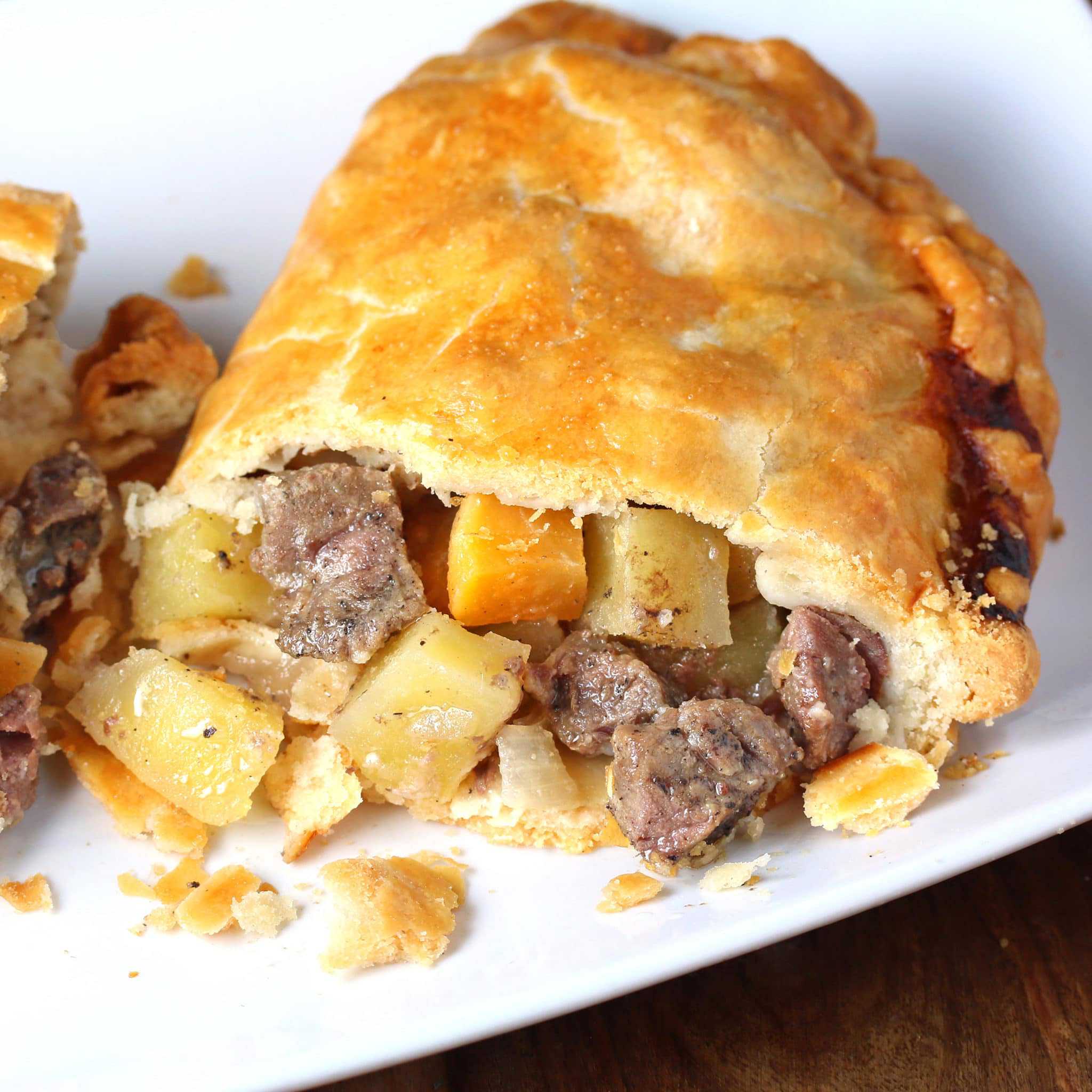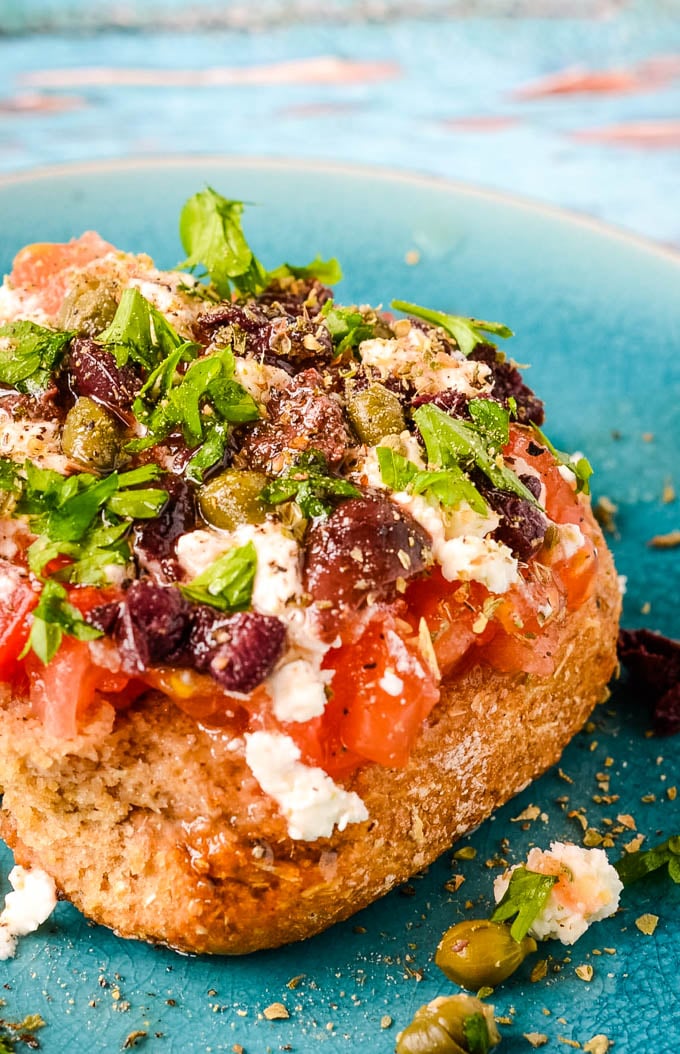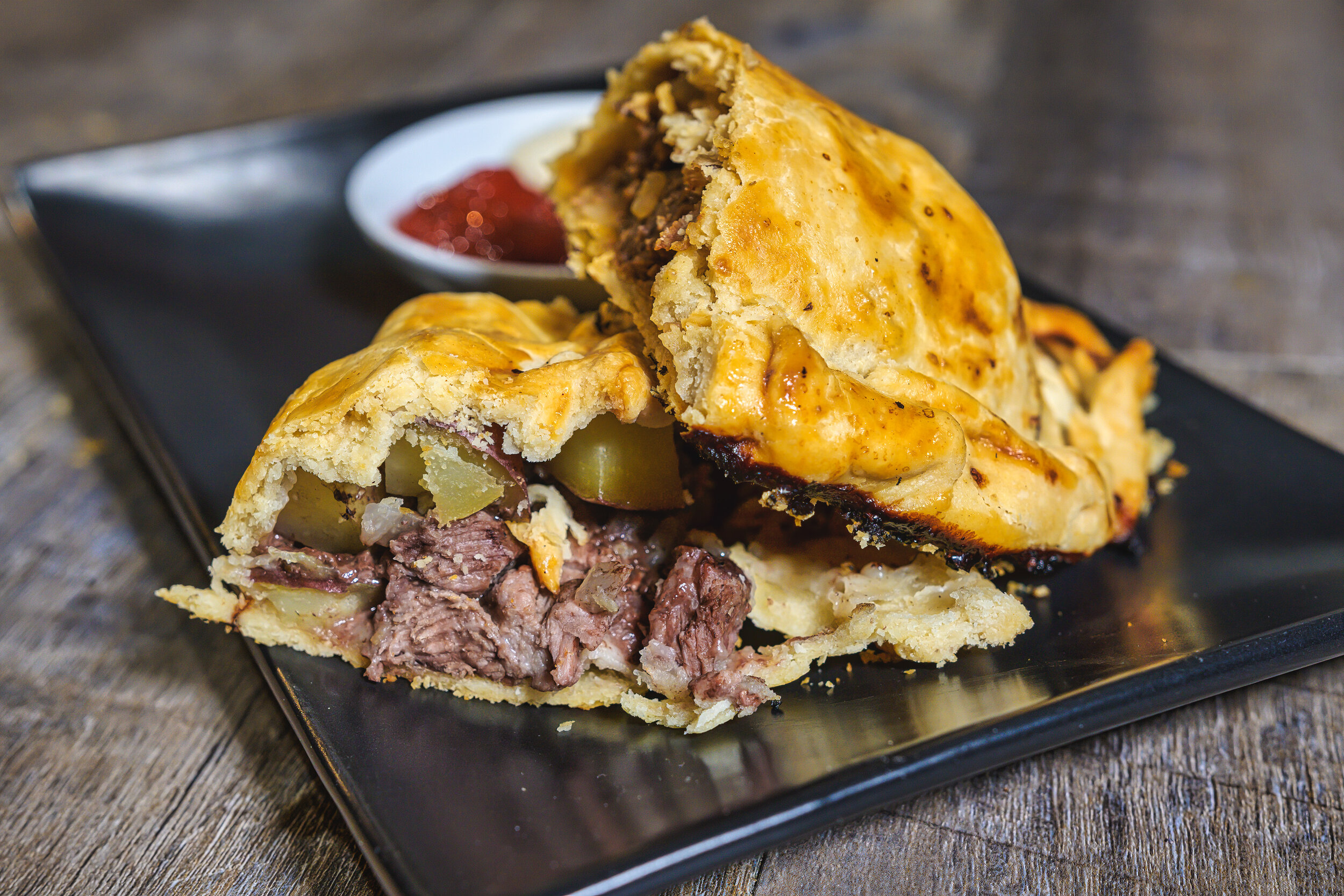British Baked Pastry - Pasty

The pasty has a long and interesting history, originating as a humble and practical food item with roots in Cornwall, England. Here's a brief history of the pasty:
- Origins:
The pasty's origins can be traced back to Cornwall, a region in the southwestern part of England. It is believed to have been introduced as a convenient and portable meal for miners during the 17th and 18th centuries. The pasty was an ideal choice for miners, as its thick, folded crust served as a practical handle, allowing them to eat the filling without dirtying their hands. The miners' pasties typically contained a combination of meat, potatoes, onions, and sometimes turnips, providing a hearty and satisfying meal.
- Popularity and Spread:
As mining communities grew, so did the popularity of the pasty. The convenience of this portable and nourishing meal made it a staple not only for miners but also for other working-class individuals. Over time, the pasty became synonymous with Cornwall and gained popularity throughout the region.
- Traditional Recipe:
The traditional Cornish pasty recipe consists of a distinctive "D" shape, with a crimped edge that creates a thick crust. The filling traditionally includes beef, potatoes, onions, and swede (rutabaga), seasoned with salt and pepper. The crimping pattern on the edge of the pasty was often used to distinguish different fillings, with miners adopting unique crimping styles based on their preferences or regional variations.:max_bytes(150000):strip_icc()/traditional-cornish-pasty-recipe-435042-Hero-5b6997cbc9e77c0050b1b6e1.jpg)
- Modern Variations:
While the traditional Cornish pasty remains beloved, modern variations have emerged, with chefs experimenting with different fillings to cater to diverse tastes. Vegetarian and vegan pasties have become popular alternatives, reflecting changing dietary preferences.
In conclusion, the pasty has evolved from a practical miner's meal in Cornwall to a cherished culinary icon with cultural significance. Its enduring popularity and adaptability showcase the rich history and culinary heritage associated with this delightful pastry.

Homemade Cornish Pasties;
Ingredients:
For the Pastry:
- 4 cups all-purpose flour
- 1 cup (2 sticks) unsalted butter, chilled and diced
- Pinch of salt
- Ice water
For the Filling:
- 1 lb (450g) beef skirt or chuck, finely diced
- 2 large potatoes, peeled and cut into small cubes
- 1 large onion, finely chopped
- 1 small swede (rutabaga), peeled and cut into small cubes
- Salt and black pepper to taste
Instructions:
1. Prepare the Pastry:
a. In a large mixing bowl, combine the flour and a pinch of salt.
b. Add the diced, chilled butter to the flour and use your fingers or a pastry cutter to rub the butter into the flour until it resembles breadcrumbs.
c. Gradually add ice water, a little at a time, and mix until the dough comes together. Be careful not to overwork the dough.
d. Divide the dough into four equal portions, shape them into discs, wrap in plastic wrap, and refrigerate for at least 30 minutes.
2. Prepare the Filling:
a. In a large bowl, combine the diced beef, potatoes, chopped onion, and cubed swede.
b. Season the filling with salt and black pepper, adjusting to taste. Mix well to ensure even seasoning.
3. Preheat the Oven:
Preheat your oven to 400°F (200°C).
4. Assemble the Pasties:
a. Roll out each pastry disc on a floured surface to approximately 8-10 inches in diameter.
b. Place a generous portion of the filling on one half of each pastry round, leaving a border around the edge.
c. Fold the pastry over the filling to create a half-moon shape, crimp the edges to seal, and make a few small slits on the top to allow steam to escape.
5. Bake:
Place the assembled pasties on a baking sheet lined with parchment paper and bake in the preheated oven for about 45-50 minutes or until the pastry is golden brown and the filling is cooked through.
6. Serve:
Allow the pasties to cool for a few minutes before serving. They can be enjoyed warm or at room temperature.
Optional Tip:
Feel free to experiment with the filling ingredients. Some variations include adding carrots, peas, or herbs for additional flavor.
Enjoy your homemade Cornish pasties!
Pasty Recipe Videos;
Homemade Cornish Pasties;
British Cook - Cornish Pasty Recipe;
Minced Beef Pasty with Cheese;
References;
- Oxford Learner's Dictionaries, s.v. "pasty" Archived 9 March 2021 at the Wayback Machine.
- Bamford 2019-04-09T00:00:00+01:00, Vince. "Cornish pasty is UK's most recognised PGI product". British Baker. Archived from the original on 21 July 2021. Retrieved 19 July 2021.
- "History of the Cornish Pasty". Historic UK. Archived from the original on 1 November 2021. Retrieved 19 July 2021.
- "Commission Implementing Regulation (EU) No 717/2011 of 20 July 2011 entering a name in the register of protected designations of origin and protected geographical indications (Cornish Pasty (PGI))". Official Journal of the European Union. 54 (L 193): 13–14. 23 July 2011. ISSN 1725-2555. Archived from the original on 28 June 2021. Retrieved 1 September 2011.
Thank you for reading your time!
You can complete great comment tasks at here. #pasty #british #cuisine #bakery #mincedbeef #foodinspiration #food #cooking #chefs







































